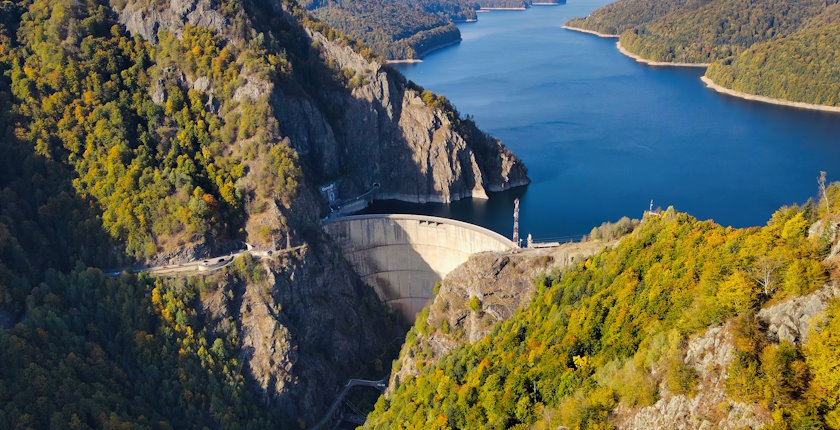
Photo: Frimufilms on Freepik
Nature conservation and human rights organizations said the Constitutional Court of Albania decided to launch a trial after they filed a complaint against the Skavica hydropower project.
Albania’s biggest three hydropower plants are on the Drin (Drim) river. Together with privately owned Ashta 1 and 2, the last ones in the cascade, they have 1.4 GW in total capacity. A project is underway to build the Skavica hydropower plant upstream from the existing facilities.
The planned capacity is 210 MW. In 2020 the government picked Bechtel, based in the United States, as the contractor. A special law facilitating the deal was adopted in parliament in the meantime. The company is supposed to build and commission the system and hand it over to national power utility KESH.
Financing yet to be secured
Construction is set to begin by the end of the year even though financing hasn’t been secured yet, according to media reports. Apparently, the costs at least doubled to over EUR 1 billion. Even the exact location of the dam hasn’t been officially determined.
The dispute got another dimension with the launch of the case at the Constitutional Court
A series of protests were held by the local population and environmentalists in the municipalities of Kukës, where the village of Skavica is located, and neighboring Dibër, further upstream. A group of nongovernmental organizations said the dispute now has another dimension, as the Constitutional Court of Albania agreed to start a trial upon their complaint.
The Albanian Helsinki Committee and the Black Drin Association launched the procedure with the support of EuroNatur and CEE Bankwatch Network. They explained that the complaint alleges, amongst other things, the violation of the principles of legal equality and economic freedom in the award of public contracts.
Only 15% of all cases are accepted and they rarely include submissions by civil society organizations, they pointed out.
Allegations of possible corruption
“By circumventing open procurement and competition, this deal raises risks of possible corruption and doubts about the value for money of the project. It also undermines the meaningfulness of the environmental and social impact assessment,” fears Andrey Ralev, biodiversity campaigner at CEE Bankwatch Network.
Hoxha: Skavica’s social impacts may be among the worst of any dam built in Europe in the 21st century
The Skavica dam would flood the last free-flowing stretch of the Black Drin River in Albania. The river originates from Lake Ohrid, in North Macedonia, and flows into the Adriatic Sea.
‘With 41 villages and more than 2,500 houses in Dibër municipality threatened by the project, Skavica’s social impacts may be among the worst of any dam built in Europe in the 21st century. Residents have been fighting against Skavica for years. The vast majority doesn’t want the dam,’ says Majlinda Hoxha, coordinator of the Group of Rural Activists of Dibra, which co-signed the joint statement.
If the controversial special law is annulled, it will serve as a lesson for other cases, she underscored.
Balkan lynx to lose bio-corridor
Skavica’s ecological consequences would also be devastating, particularly for the critically endangered Balkan lynx, environmentalists warned.
“The dam would disrupt the only bio-corridor between Albania and North Macedonia where the two remaining viable reproductive lynx populations cross. Skavica would also flood what could be Albania’s largest floodplain forest, meaning that an array of biodiversity and habitats and a huge carbon sink would be lost. These impacts invalidate any argument that Skavica would drive green and climate-friendly energy development,” said Amelie Huber, freshwater project manager at EuroNatur.
In recent years, the Dibër valley, which is under threat from the proposed dam and reservoir, emerged as a hub for ecotourism and organic farming, partly subsidised.
The government and other proponents of the project argue that Skavica would preserve water upstream on the Black Drin, prevent flooding and boost average output in the rest of the hydropower cascade.


















Be the first one to comment on this article.